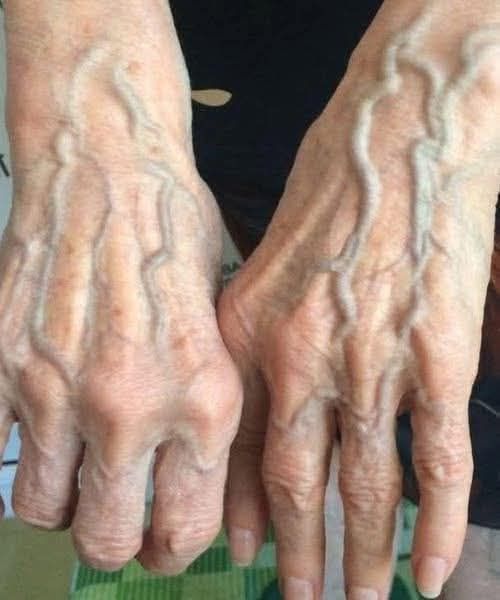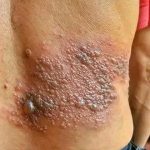Low Body Fat: When body fat reduces, especially in the limbs or torso, the layer of fat that usually hides veins becomes thinner, making them more visible.
Exercise and Weight Lifting: Increased blood flow during exercise can make veins to swell and become more noticeable. Over time, with regular training, muscles grow and push the veins closer to the surface.
Hot Weather: Warm temperatures cause veins to dilate (widen) as the body tries to cool itself. This temporary change can make them more visible, especially in the arms and legs.
Aging: As we age, our skin removes elasticity and becomes thinner. This allows underlying structures like veins to show through more easily.
When to see a doctor
Seek medical attention if you experience any of the following symptoms along with suddenly prominent veins:
-
Pain or heaviness:This can indicate a circulatory problem or varicose veins.
-
Swelling:Sudden swelling, especially in the legs, can be a sign of a deep vein thrombosis (DVT).
-
Skin changes:Look for discoloration, warmth, tenderness, or sores near the vein, which could signal a blood clot or other circulation issues.
-
Large, bulging, or twisted veins:While often cosmetic, these could be signs of varicose veins, which can sometimes lead to complications like ulcers or clots.
-
Bleeding:If a vein, especially a varicose vein, starts to bleed, seek medical help immediately.
When it’s likely not a concern
Visible veins can be harmless and appear for various reasons:
-
Exercise:Increased blood flow during and after exercise can make veins temporarily more prominent.
-
Hormonal changes:Pregnancy can cause veins to become more visible.
-
Weight loss:Reducing the layer of fat beneath the skin can make veins appear closer to the surface.
-
Genetics and age:Some people naturally have more visible veins due to genetics, and skin thinning with age can also increase visibility.
What to do
-
Schedule a checkup:If you are concerned, schedule a general checkup. A doctor can examine your veins and may perform an ultrasound to check for blood clots.
-
Do not ignore warning signs:If you notice any of the warning signs listed above, contact your healthcare provider immediately. If you have heavy bleeding, call emergency services.


